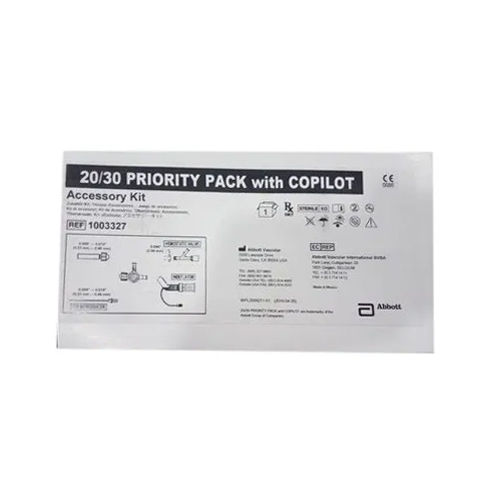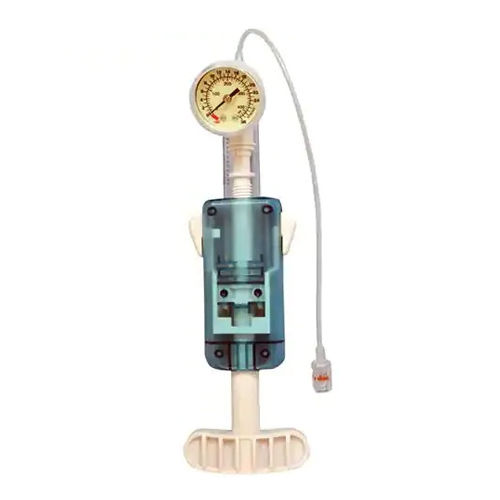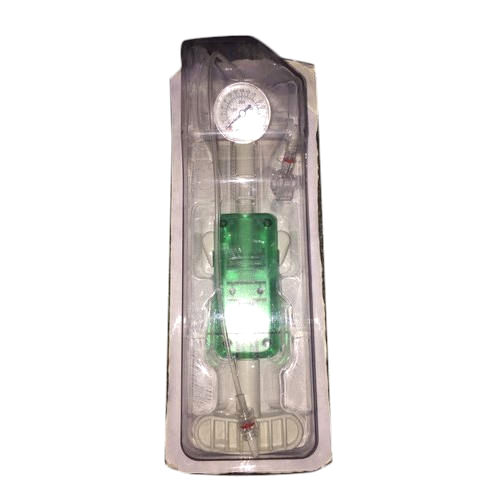Everest Disposable Inflation Device
Product Details:
- Material Plastic
- Portable Yes
- Sterilized Yes
- Usage Hospital
- Power Source Manual
- Click to View more
Everest Disposable Inflation Device Price And Quantity
- 50 Piece
- 2300 INR/Piece
Everest Disposable Inflation Device Product Specifications
- Yes
- Yes
- Hospital
- Manual
- Plastic
Everest Disposable Inflation Device Trade Information
- 10000 Piece Per Week
- 4 Days
Product Description
Medtronic Everest 30 Disposable Inflation Device is mainly used for the inflation of angioplasty devices that requires dilation. It also features braided high-pressure tubing with a rotating male Luer fitting, and an extremely comfortable handle. Medtronic Everest 30 Disposable Inflation Device is used to facilitate the use of guidewires during interventional procedures. Moreover, it is designed to be used to deflate balloon inflation devices to monitor pressure within the balloon.
Product details
|
Fluid Capacity |
60 ml |
|
Packaging Type |
Box |
|
Maximum Pressure |
30 atm |
|
Disposable |
Yes |
|
Application |
Hospital |
|
Color |
White |
|
Model Name/Number |
Everest 30 |
|
Type |
Drilling Equipments |
|
Material |
Plastic |
|
Brand |
Medtronic |
Frequently Asked Questions
Q: What is an inflating device that is disposable?
A: A Medtronic Everest 30 disposable inflation device is a medical tool used to inflate and deflate balloons during a variety of procedures, such as angioplasty or stent implantation. A handheld gadget is often used to manage the balloon's inflation and deflation.
Q: How does a single-use inflating device operate?
A: The Medtronic Everest 30 disposable inflation device consists of a connecting tube and a plunger that resembles a syringe. The balloon is inflated by the plunger, which forces sterile fluid typically contrast medium or saline from the syringe into it. The healthcare expert can precisely inflate and deflate the balloon as needed during the process by controlling the movement of the plunger.
Q: What constitutes a Medtronic Everest 30 disposable inflation devices primary parts?
A: A syringe barrel, a plunger, a connecting tube, and a Luer lock or other connector for joining to the balloon catheter are typically the essential parts of a Medtronic Everest 30 disposable inflating device. Additionally, some devices could contain valves or pressure gauges for better control.
Q: Are single-use Medtronic Everest 30 disposable inflating devices available?
A: Yes, single use is the intended purpose of Medtronic Everest 30 disposable inflating devices. They are designed to be thrown away following a single procedure in order to preserve sterility and lower the possibility of contamination or infection.
Q: Can reusable inflating tools be used for a variety of medical procedures?
A: Yes, Medtronic Everest 30 disposable inflation devices are used in a variety of medical operations, such as controlled balloon inflation procedures including angioplasty, stent implantation, balloon dilation, and embolisation.






